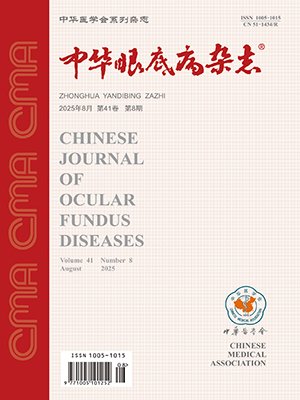| 1. |
李西玲, 谢成.黄斑水肿的光相干断层扫描分析[J].中华眼底病杂志, 2004, 20:152-155.
|
| 2. |
Matsumoto H, Sato T, Kishi IS. Outer nuclear layer thickness at the fovea determines visual outcomes in resolved central serous chorioretinopathy[J]. Am J Ophthalmol, 2009, 48:105-110.
|
| 3. |
黎晓新, 赵明威.我国近五年眼底病诊疗技术进展[J].中华眼科杂志, 2010, 46:900-904.
|
| 4. |
Lujan BJ, Roorda A, Knighton RW, et al. Revealing Henle's fiber layer using spectral domain optical coherence tomography[J]. Invest Ophthalmol Vis Sci, 2011, 52:1486-1492.
|
| 5. |
Otani T, Yamaguchi Y, Kishi S. Improved visualization of Henle fiber layer by changing the measurment beam angle on optical coherence tomagraphy[J].Retina, 2011, 31:497-501.
|
| 6. |
黎晓新, 陈玮志.光学相干断层扫描检查图像及解读分析[J].中华眼底病杂志, 2012, 28:84-88.
|
| 7. |
孙心铨, 刘晓玲.解读视网膜外层及色素上皮层的3D-OCT图像和临床意义[J].中华眼视光学与视觉科学杂志, 2010, 12:324-327.
|
| 8. |
李瑞峰.正确理解眼底组织光学特点, 合理解析光相干断层扫描图像[J].中华眼底病杂志, 2009, 25:210-212.
|
| 9. |
Zhou Q. Retinal scanning laser polarimetry and methods to compensate for corneal birefringence[J]. Bull Soc Belge Ophtalmol, 2006, 302:89-106.
|
| 10. |
孙思勤.相干光断层扫描在眼前节的应用[J].国际眼科纵览, 2006, 30:289-291.
|
| 11. |
Arevalo JF, Krivoy D, Fernandez CF.How does optical coherence tomography work basic principles?[M]//Arevalo JF.Retinal angiography and optical coherence tomography. New York:Spring, 2009:217-222.
|
| 12. |
Soliman W, Sander B, Jorgensen TM. Enhanced optical coherence patterns of diabetic macular oedema and their correlation with the pathophysiology[J]. Acta Ophthalmol Scand, 2008, 85:613-617.
|
| 13. |
Drasdo N, Millican CL, Katholi CR, et al. The length of Henle fibers in the human retina and a model of ganglion receptive field density in the visual field[J].Vision Res, 2007, 47:2901-2911.
|
| 14. |
Ahlers C, Geitzenauer W, Stock G, et al. Alterations of intraretinal layers in acute central serous chorioretinopathy[J]. Acta Ophthalmol, 2009, 87:511-516.
|
| 15. |
Kishi S, Kamei Y, Shimizu K, et al. Tractional elevation of Henle's fiber layer in idiopathic macular holes[J]. Am J Ophthalmol, 1995, 120:486-496.
|
| 16. |
Elsner AE, Weber A, Cheney MC, et al. Spatial distribution of macular birefringence associated with the henle fiber[J]. Vision Res, 2008, 48:2578-2585.
|
| 17. |
Mones J, Biarnes M, Trindade F, et al. Optical coherence tomoography assessment of apparent foveal swelling in patients with foveal sparing secondary to geographic atrophy[J].Ophthalmology, 2013, 120:829-836.
|
| 18. |
牟晓月, 孙祖华, 贾晓林, 等.中心性浆液性脉络膜视网膜病变光感受器层频域光学相干断层扫描的观察[J].中华眼视光学与视觉科学杂志, 2011, 13:169-172.
|




